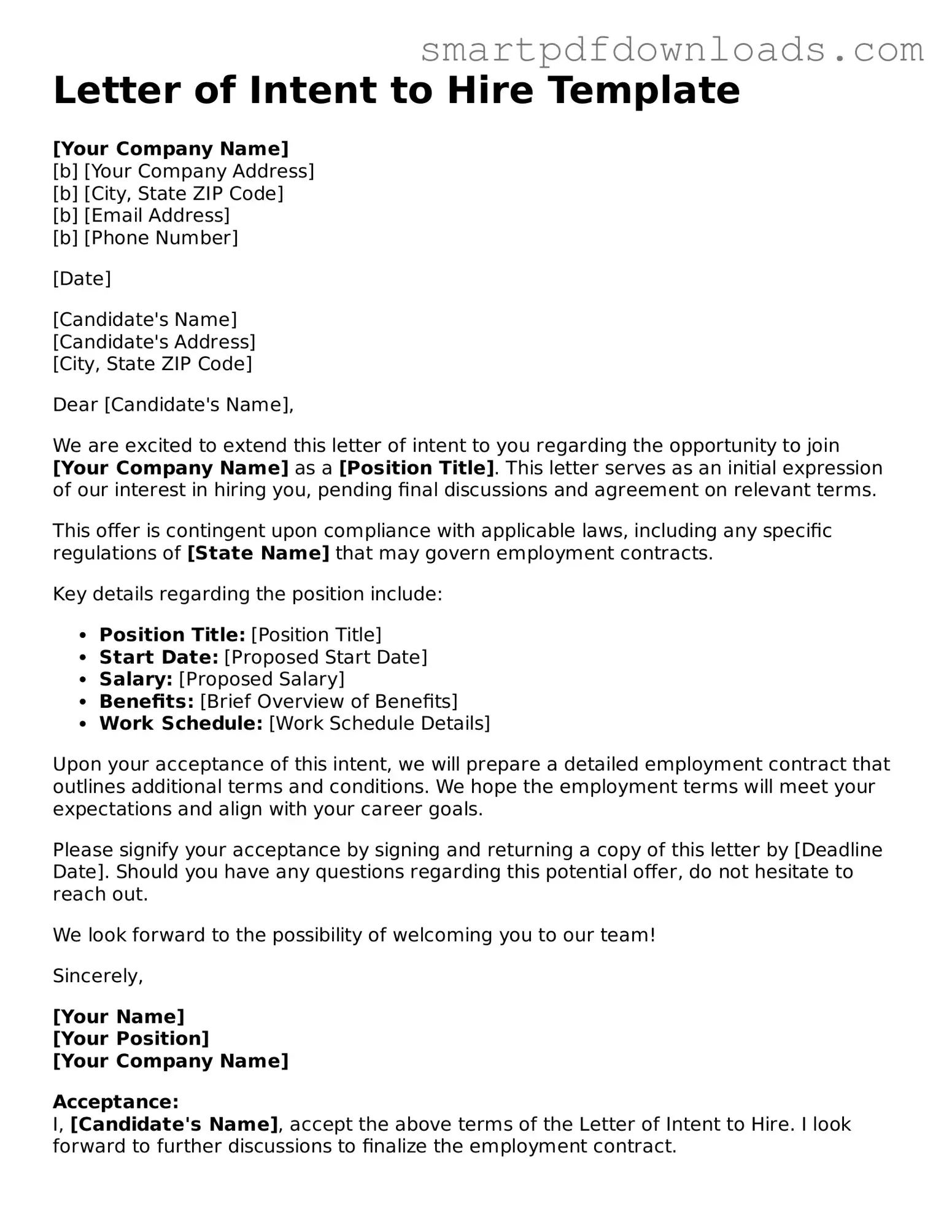Letter of Intent to Hire Template
[Your Company Name]
[b] [Your Company Address]
[b] [City, State ZIP Code]
[b] [Email Address]
[b] [Phone Number]
[Date]
[Candidate's Name]
[Candidate's Address]
[City, State ZIP Code]
Dear [Candidate's Name],
We are excited to extend this letter of intent to you regarding the opportunity to join [Your Company Name] as a [Position Title]. This letter serves as an initial expression of our interest in hiring you, pending final discussions and agreement on relevant terms.
This offer is contingent upon compliance with applicable laws, including any specific regulations of [State Name] that may govern employment contracts.
Key details regarding the position include:
- Position Title: [Position Title]
- Start Date: [Proposed Start Date]
- Salary: [Proposed Salary]
- Benefits: [Brief Overview of Benefits]
- Work Schedule: [Work Schedule Details]
Upon your acceptance of this intent, we will prepare a detailed employment contract that outlines additional terms and conditions. We hope the employment terms will meet your expectations and align with your career goals.
Please signify your acceptance by signing and returning a copy of this letter by [Deadline Date]. Should you have any questions regarding this potential offer, do not hesitate to reach out.
We look forward to the possibility of welcoming you to our team!
Sincerely,
[Your Name]
[Your Position]
[Your Company Name]
Acceptance:
I, [Candidate's Name], accept the above terms of the Letter of Intent to Hire. I look forward to further discussions to finalize the employment contract.
Signature: _________________________ Date: ________________
